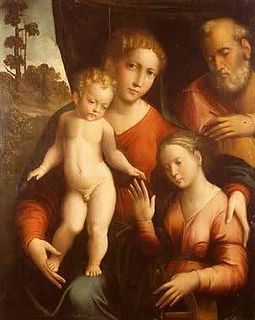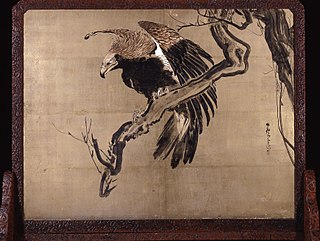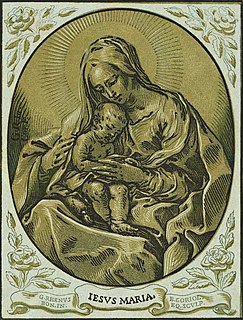
Andrea Andreani (1540–1623) was an Italian engraver on wood, who was among the first printmakers in Italy to use chiaroscuro, which required multiple colours.

Franco Fontana is an Italian photographer. He is best known for his abstract colour landscapes.

Tomioka Tessai was the pseudonym for a painter and calligrapher in imperial Japan. He is regarded as the last major artist in the Bunjinga tradition and one of the first major artists of the Nihonga style. His real name was Yusuke, which he later changed to Hyakuren.

Isoda Koryūsai was a Japanese ukiyo-e print designer and painter active from 1769 to 1790.

Innocenzo Francucci, generally known as Innocenzo da Imola, was an Italian painter and draftsman.

Giuseppe Bernardino Bison was an itinerant Italian painter of frescoes, landscapes, vedute, capriccios and some religious works.

Hieronymus Cock, or Hieronymus Wellens de Cock was a Flemish painter and etcher as well as a publisher and distributor of prints. Cock is regarded as one of the most important print publishers of his time in northern Europe. His publishing house played a key role in the transformation of printmaking from an activity of individual artists and craftsmen into an industry based on division of labour. His house published more than 1,100 prints between 1548 and his death in 1570, a vast number by earlier standards.

Gaetano Gandolfi was an Italian painter of the late Baroque and early Neoclassic period, active in Bologna.

Nagasawa Rosetsu was an 18th-century Japanese painter of the Maruyama School, known for his versatile style. He was born to the family of a low-ranking samurai. He studied with Maruyama Ōkyo in Kyoto.
Okada Hankō was a Japanese painter during the Edo period. He was the son of the painter and rice merchant Okada Beisanjin. He built a studio and home near Osaka on the bank of the Yodo River, but was forced to move to Sumiyoshi-ku, Osaka, due to a rebellion.

Bartolommeo Coriolano was an Italian engraver during the Baroque period. His father, Cristoforo Coriolano, and brother, Giovanni Battista Coriolano were also woodblock printers, although there is some doubt over the actual relationship between Cristoforo and Bartolommeo Coriolano. Coriolano had a daughter, Teresa Maria Coriolano, who later became a painter and engraver.
Shunsen Natori was a Japanese woodblock printer, considered by many to be the last master in the art of kabuki yakusha-e "actor pictures".
Filippo Pedrini was an Italian painter.

The Palazzo Poggi is a palazzo in Via Zamboni 33, Bologna, Italy. It is the headquarters of the University of Bologna and of the rector of the university.

The Academy of Sciences of the Institute of Bologna is an academic society in Bologna, Italy, that was founded in 1690 and prospered in the Age of Enlightenment. Today it is closely associated with the University of Bologna.
Bartolomeo Valiani was an Italian painter.
Bernardo Minozzi was an Italian painter, mainly of landscapes in a late Baroque style.

The Palazzo Torfanini is a Renaissance architecture palace located on Via Galliera 4, in central Bologna. It is located near the Palazzo Aldrovandi. The palace, with typical facade arcades, was commissioned by Bartolomeo Torfanini in 1544.

Matsumura Keibun was a Japanese painter.
Innocenzo is a male given name of Latin origin. Notable people with this name include:














